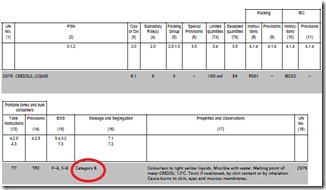IMDG Code is applicable to any to ship which SOLAS 74, as amended, applies and are carrying dangerous goods. Dangerous Goods is defined in Regulation 1 of SOLAS Chapter VII Part A as the substances, materials and articles covered by the IMDG Code.
Document of compliance with the special requirements for ships carrying dangerous goods as per the provisions of regulation II-2/19 of the SOLAS 1974, as amended is applicable to
a) Passenger ships and Cargo ships constructed on or after 1st July 2002
b) 1. For passenger ships constructed on or after 1st Sept 1984 but before 1st July 2002
2. a cargo ship of 500 gross tons or over constructed on or after 1st Sept 1984 but before 1st July 2002
3. a cargo ships of less than 500 gross tons constructed on or after 1st Feb 1992 but before 1st July 2002
the requirements of regulation II-2/54 of SOLAS 1974, as amended by MSC.1(XLV), MSC.6(48), MSC.13(57), MSC.22(59), MSC.24(60), MSC.27(61), MSC.31(63) and MSC.57(67), apply.
Member governments to SOLAS Convention is recommended to apply, as far as possible, IMDG Code to cargo ships of less than 500 gross tons constructed on or after 1st Sept 1984 and before 1st Feb 1992.
Any ship irrespective of size and type which carries substances, materials or articles identified as Marine Pollutants in IMDG Code are subject to the provisions of the said code.
Related articles
- A Compact Guide to Handling Dangerous Goods (dangerousgoodsmanagement.wordpress.com)






